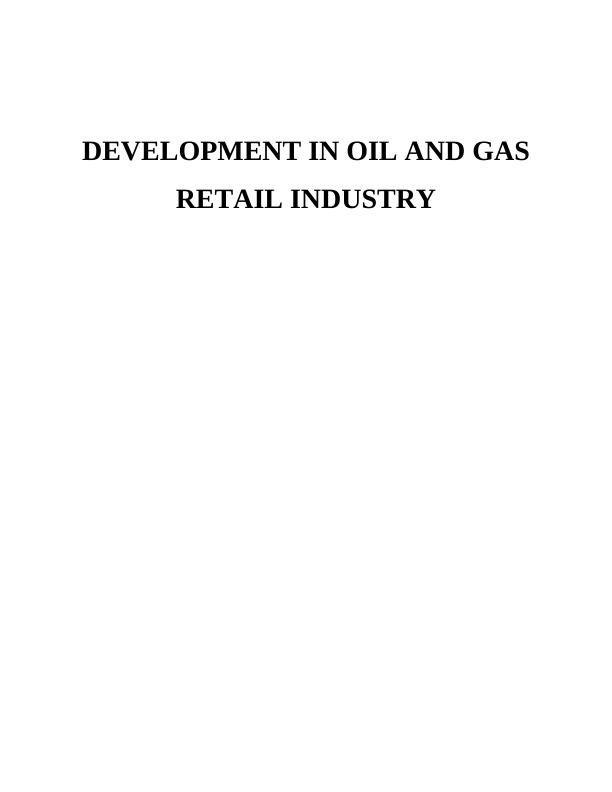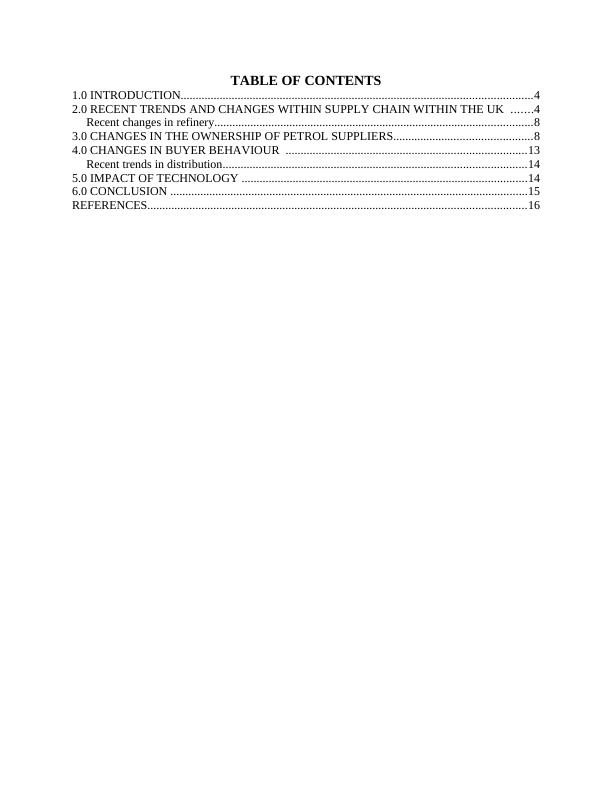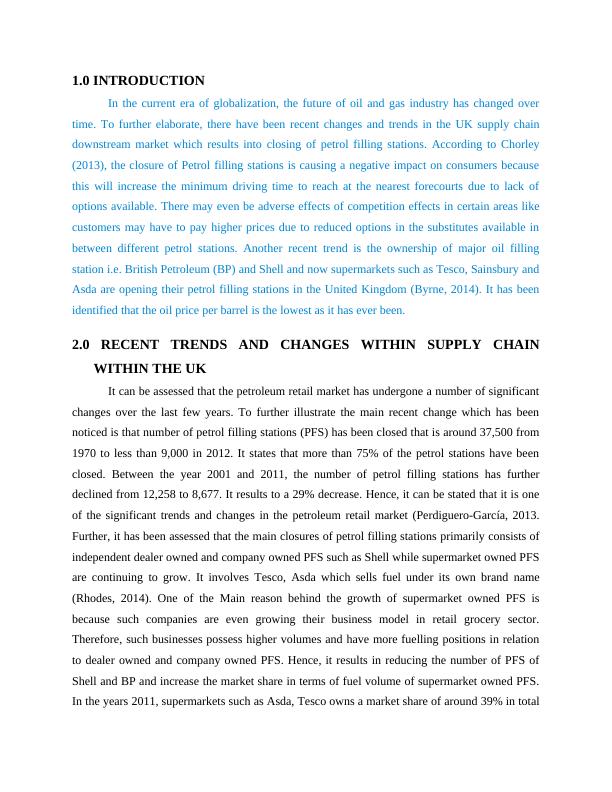Case Study on Development in Oil and Gas Retail Industry
19 Pages4934 Words118 Views
Added on 2020-01-21
Case Study on Development in Oil and Gas Retail Industry
Added on 2020-01-21
ShareRelated Documents
DEVELOPMENT IN OIL AND GASRETAIL INDUSTRY

TABLE OF CONTENTS1.0 INTRODUCTION.....................................................................................................................42.0 RECENT TRENDS AND CHANGES WITHIN SUPPLY CHAIN WITHIN THE UK .......4Recent changes in refinery..........................................................................................................83.0 CHANGES IN THE OWNERSHIP OF PETROL SUPPLIERS..............................................84.0 CHANGES IN BUYER BEHAVIOUR ................................................................................13Recent trends in distribution.....................................................................................................145.0 IMPACT OF TECHNOLOGY ...............................................................................................146.0 CONCLUSION .......................................................................................................................15REFERENCES..............................................................................................................................16

ILLUSTRATION INDEXIllustration 1: North Sea Production................................................................................................6Illustration 2: Declining of PFS in past decades..............................................................................9Illustration 3: Asda PFS.................................................................................................................11Illustration 4: Rising of petrol prices of different companies........................................................12Illustration 5: Total number of PFS and total fuel volumes...........................................................13

1.0 INTRODUCTIONIn the current era of globalization, the future of oil and gas industry has changed overtime. To further elaborate, there have been recent changes and trends in the UK supply chaindownstream market which results into closing of petrol filling stations. According to Chorley(2013), the closure of Petrol filling stations is causing a negative impact on consumers becausethis will increase the minimum driving time to reach at the nearest forecourts due to lack ofoptions available. There may even be adverse effects of competition effects in certain areas likecustomers may have to pay higher prices due to reduced options in the substitutes available inbetween different petrol stations. Another recent trend is the ownership of major oil fillingstation i.e. British Petroleum (BP) and Shell and now supermarkets such as Tesco, Sainsbury andAsda are opening their petrol filling stations in the United Kingdom (Byrne, 2014). It has beenidentified that the oil price per barrel is the lowest as it has ever been. 2.0 RECENT TRENDS AND CHANGES WITHIN SUPPLY CHAINWITHIN THE UK It can be assessed that the petroleum retail market has undergone a number of significantchanges over the last few years. To further illustrate the main recent change which has beennoticed is that number of petrol filling stations (PFS) has been closed that is around 37,500 from1970 to less than 9,000 in 2012. It states that more than 75% of the petrol stations have beenclosed. Between the year 2001 and 2011, the number of petrol filling stations has furtherdeclined from 12,258 to 8,677. It results to a 29% decrease. Hence, it can be stated that it is oneof the significant trends and changes in the petroleum retail market (Perdiguero-García, 2013.Further, it has been assessed that the main closures of petrol filling stations primarily consists ofindependent dealer owned and company owned PFS such as Shell while supermarket owned PFSare continuing to grow. It involves Tesco, Asda which sells fuel under its own brand name(Rhodes, 2014). One of the Main reason behind the growth of supermarket owned PFS isbecause such companies are even growing their business model in retail grocery sector.Therefore, such businesses possess higher volumes and have more fuelling positions in relationto dealer owned and company owned PFS. Hence, it results in reducing the number of PFS ofShell and BP and increase the market share in terms of fuel volume of supermarket owned PFS.In the years 2011, supermarkets such as Asda, Tesco owns a market share of around 39% in total

End of preview
Want to access all the pages? Upload your documents or become a member.
Related Documents
Development in Oil and Gas Retail Industrieslg...
|15
|3768
|431
Aspects of UK crude Oil Market - Reportlg...
|11
|3505
|29
Structure of the Petroleum Sector and Current Position of UK Oil and Gas Industrylg...
|11
|501
|351
Development in Oil and Gas Industrieslg...
|15
|2957
|216
Development in Oil and Gas Retail Industrieslg...
|15
|1308
|120
The Different Downstream Oil Sectors in UKlg...
|10
|2373
|62
